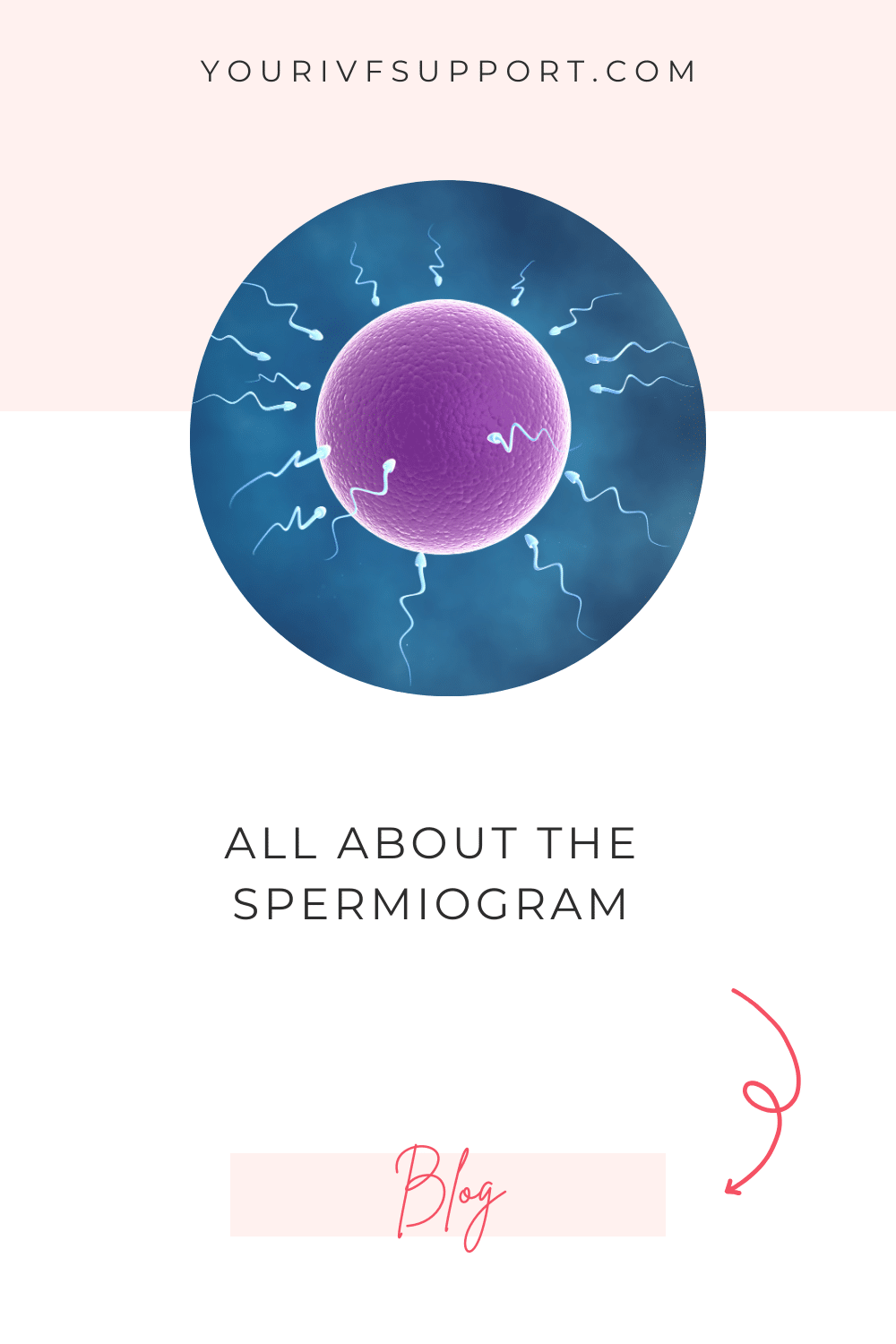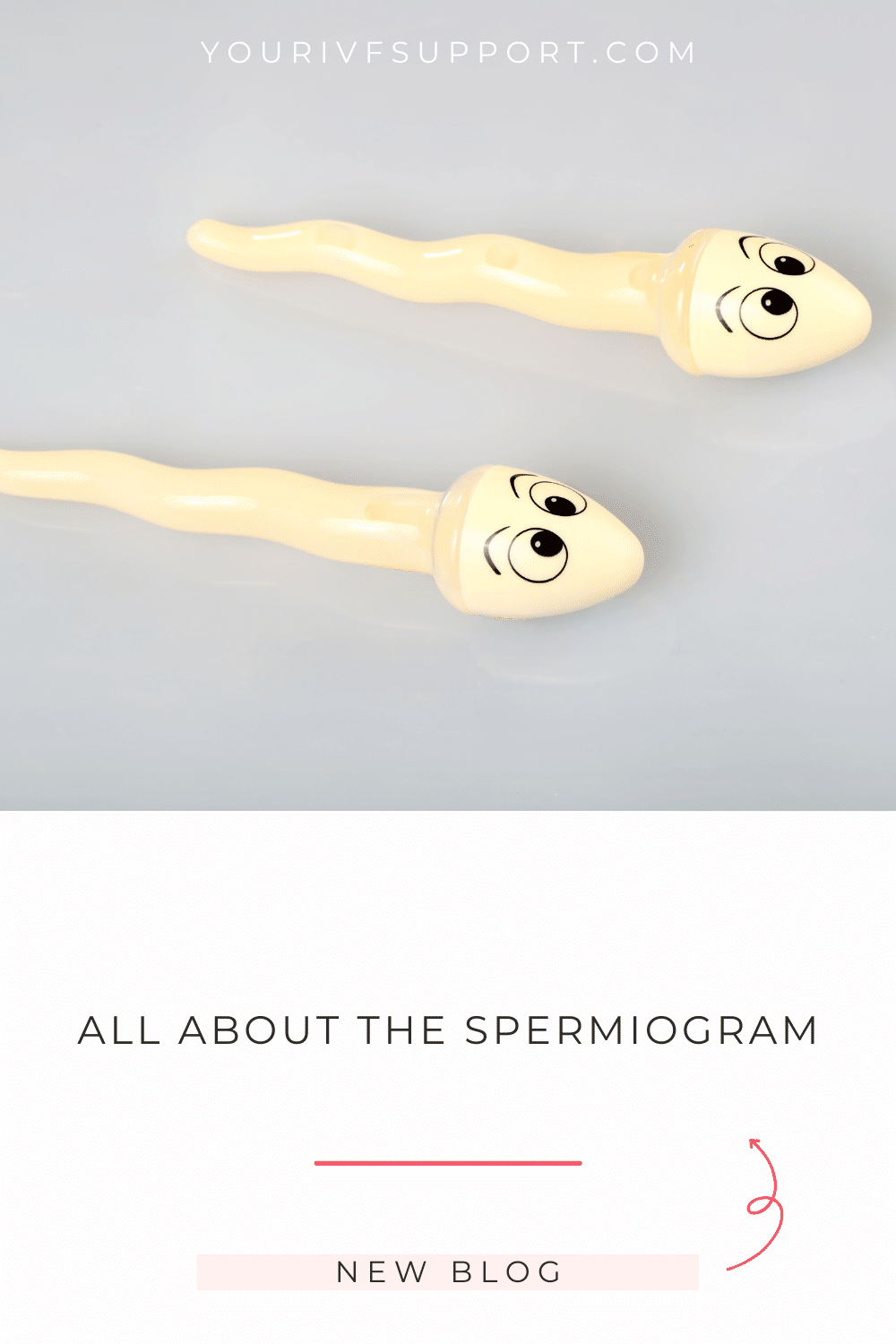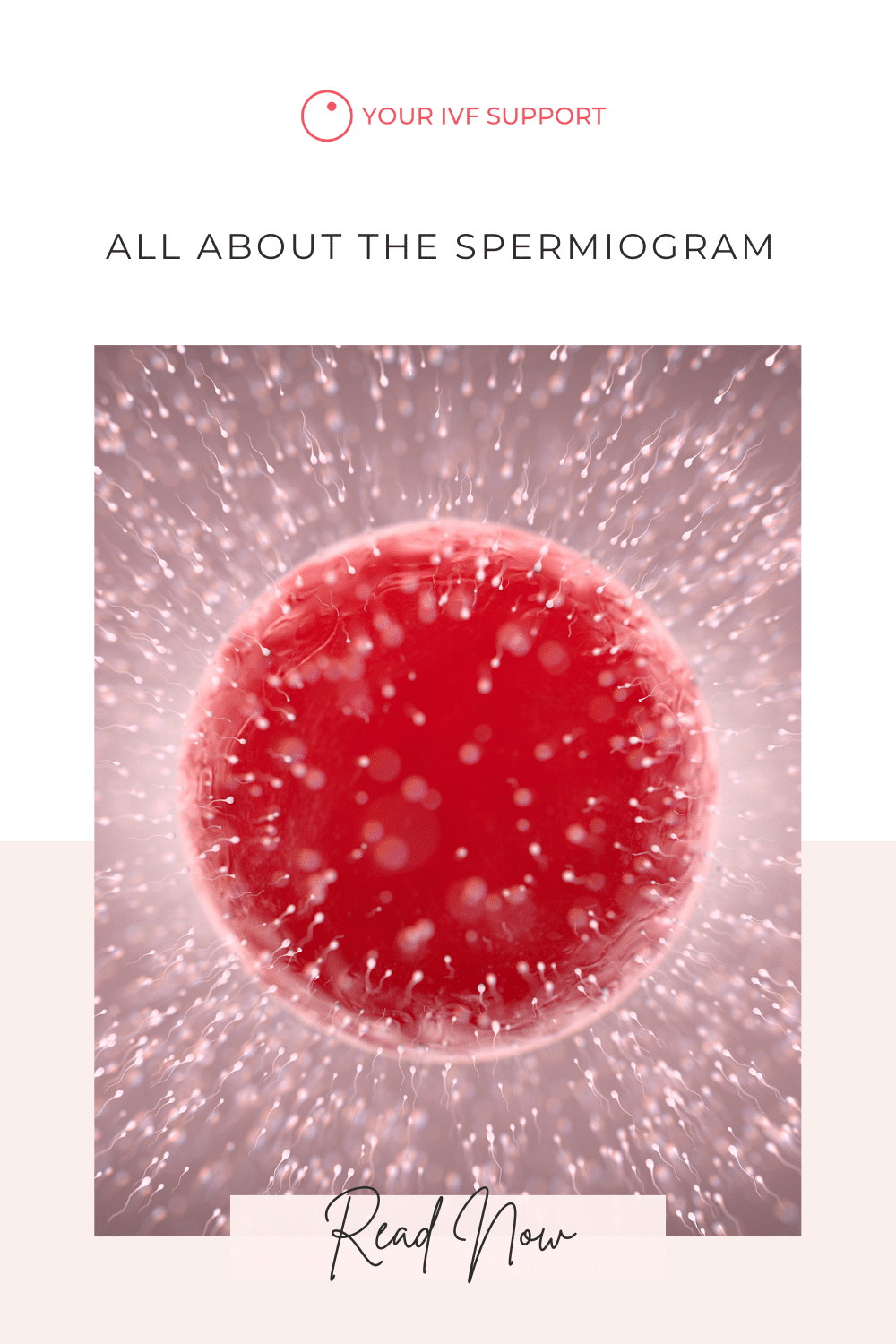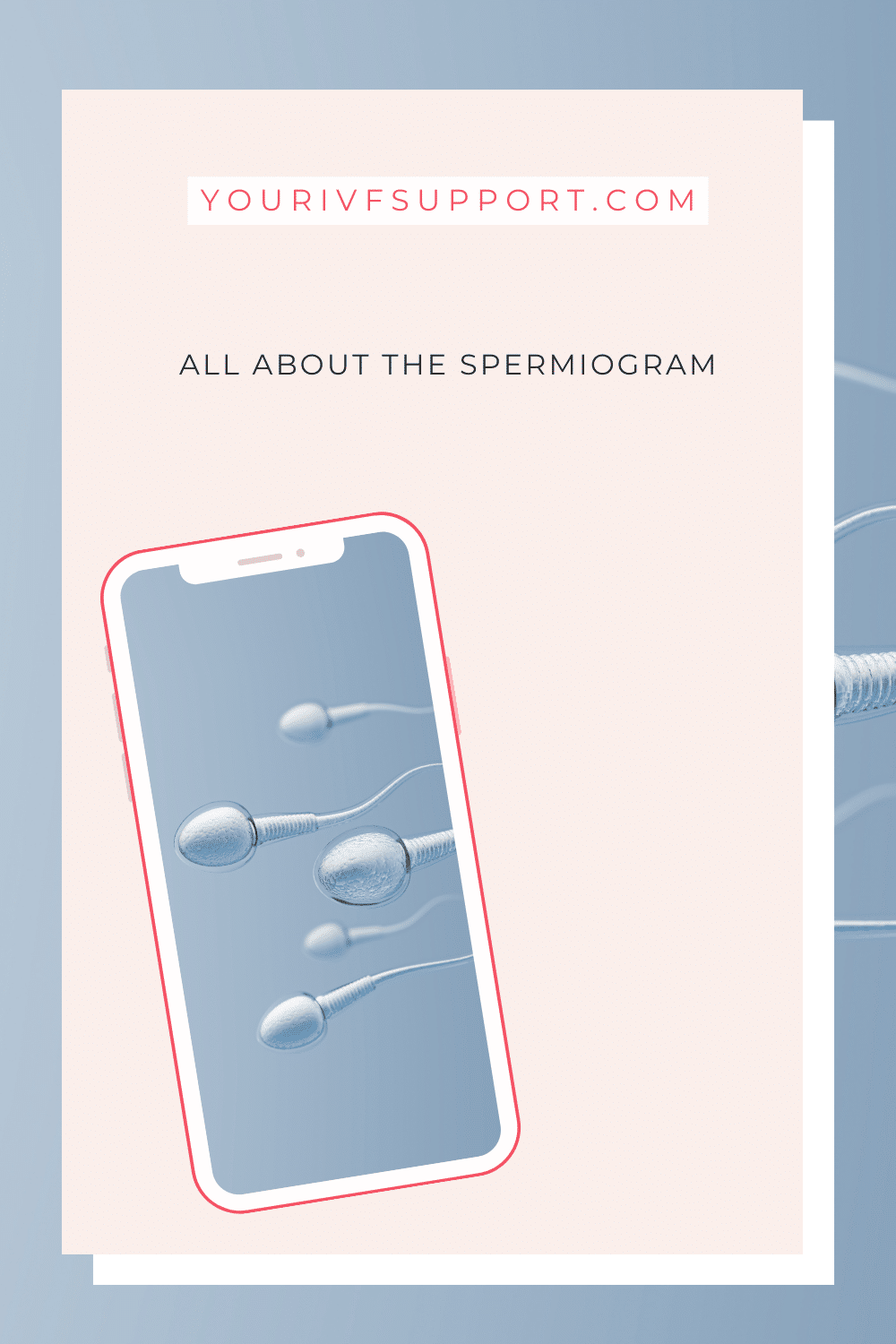This blog article is all about the spermiogram - an important test to determine the quality and quantity of your sperm. The spermiogram plays a crucial role in diagnosing fertility problems and can provide you and your partner with valuable information. Let's explore the fascinating world of the spermiogram and find out how it can help you on your way to having your dream baby.
What is a spermiogram?
A spermiogram is a medical test that analyses a man's ejaculate for various parameters. The ejaculate, or seminal fluid, contains the sperm responsible for fertilising the egg. The spermiogram provides information about the number, motility, shape and vitality of the sperm. These parameters are crucial for male fertility and can provide information about possible causes of infertility.
Why is a spermiogram important?
A spermiogram is one of the first tests performed on a couple who are trying to have children. It is used to assess the man's fertility and identify potential problems. Many people tend to automatically look to the woman for the cause of infertility, but studies show that around half of cases are due to male factors. A spermiogram can help to identify any problems early and take appropriate action.

How is a spermiogram done?
Performing a spermiogram is straightforward and usually requires little effort. The man needs to provide a sample of semen, which is then analysed in the laboratory. For the test to be accurate, it is important that the sample is taken under controlled conditions.
It is recommended that sexual abstinence be maintained for two to five days to ensure that sperm count and quality are optimal. The semen sample is collected either by masturbation in a special container or during sexual intercourse using a special condom.
In the laboratory, various parameters of the semen are analysed. These include determining the sperm concentration, i.e. the number of sperm per millilitre of ejaculate. The motility of the sperm, their shape (morphology) and their vitality are also examined.
Other tests may also be carried out, for example to check for infections or genetic abnormalities. The exact procedure may vary slightly from laboratory to laboratory, but the aim is always the same: a comprehensive assessment of sperm quality.
Interpreting the results
After the spermiogram has been analysed in the laboratory, you will receive the results. These are usually presented in the form of a table listing the various parameters such as sperm concentration, motility and morphology. In addition, reference values may be given against which the results can be compared.
Interpretation of the results should always be done in consultation with an experienced doctor. Results are usually classified as "normal", "abnormal" or "pathological". Deviations from reference values may indicate potential fertility problems. It is important to note that a poor spermiogram does not necessarily mean that conception is impossible. However, it may indicate that certain measures should be taken to increase the chances of pregnancy.


There are different degrees of sperm problems: From azoospermia to normospermia.
Sperm quality testing is an important part of fertility evaluation in men. Sperm problems can affect the chances of conceiving naturally, and different degrees of sperm problems provide information about the severity and nature of the limitations. These gradations include azoospermia, normospermia, oligospermia, asthenospermia and teratospermia. In this article, I will discuss each of these forms and explain their impact on male fertility.
Azoospermia:
Azoospermia is one of the most severe forms of sperm abnormality and refers to the complete absence of sperm in the ejaculate. There are two main types of azoospermia: obstructive azoospermia and non-obstructive azoospermia. In obstructive azoospermia, normal sperm production occurs but the sperm are unable to reach the ejaculate due to a blockage in the reproductive tract. In non-obstructive azoospermia, the sperm production itself is affected. This can be due to hormonal disorders, genetic factors or environmental factors. Azoospermia usually requires a thorough examination to determine the cause and can make it difficult to conceive naturally.
Normospermia:
Normospermia is defined as a normal spermiogram in which all parameters are within reference values. Men with normospermia usually have good fertility and no obvious problems with sperm count, motility or morphology. Normospermia is a positive finding that increases the chances of natural conception.
Oligospermia:
Oligospermia is characterised by a low number of sperm in the ejaculate. There are different degrees of oligospermia, depending on the severity of the problem. Mild oligospermia means a slight deviation from the normal number of sperm, while severe oligospermia means that the number of sperm is significantly reduced. Sperm motility and morphology may be normal despite a low sperm count. Oligospermia may reduce the chances of natural conception, but does not necessarily require assisted reproduction.
Asthenospermia:
Asthenospermia refers to reduced sperm motility. The sperm are unable to move or move slowly. Asthenospermia can occur regardless of sperm count and affects the ability of the sperm to move towards the egg. Men with asthenospermia may have difficulty getting pregnant naturally.
Teratospermia:
Teratospermia refers to abnormal sperm morphology, which means a high number of abnormally shaped sperm. This can affect the sperm's ability to fertilise the egg. The abnormal morphology can be caused by genetic or environmental factors. Teratospermia can reduce the chances of conceiving naturally.
" Many people tend to automatically look to the woman for the cause of infertility, but studies show that around half of cases are due to male factors."
What to do if the results are abnormal?
If the spermiogram shows abnormal results, it is important not to panic. There are several measures and treatments available to improve sperm quality and increase fertility. Here are some options to consider:
Lifestyle changes
A healthy lifestyle can have a positive effect on sperm quality. It is recommended that you eat a balanced diet, take regular exercise, reduce or avoid nicotine and alcohol, and manage stress. Some supplements, such as zinc, selenium and omega-3 fatty acids, can also help.
Natural ways to improve sperm quality
There are several natural ways to improve sperm quality. These include acupuncture, relaxation techniques, certain herbs and dietary supplements. However, it is important to know that it can take some time to see an improvement in sperm quality.
The life cycle of sperm is about three months. This means that the sperm in the ejaculate today were formed about three months ago. Therefore, it is realistic to assume that it will take about three months to see an improvement in sperm quality after using the above natural methods.
It is advisable to consult an experienced therapist or doctor to find the right method for you. They will be able to take into account your individual needs and the underlying cause of your sperm problem and develop an appropriate treatment strategy. It is important to be patient and to follow the measures for a sufficient period of time to achieve a lasting improvement in sperm quality.



Medical options for a poor spermiogram
If the spermiogram is significantly abnormal or there are other medical problems, it may be advisable to consider medical options. Here are some of the options:
Hormone therapy.
In some cases, hormone therapy can help improve sperm production and quality. By targeting specific hormones, hormonal imbalances can be corrected and sperm production stimulated.
Surgical procedures
If you have a poor sperm count, indicating poor sperm quality, surgery may be an option to increase your chances of conceiving. There are several procedures that can be used, depending on the cause of the poor sperm count. Common surgical procedures include TESE, micro-TESE, TESA, MESA and PESA. Other procedures include treatment of varicoceles (varicose veins in the scrotum) and repair of blocked vas deferens.
TESE (testicular sperm extraction) involves taking a sample of tissue from the testicle to collect sperm. This procedure is used when there is testicular dysfunction or no sperm in the ejaculate. Micro-TESE is an improved form of TESE that uses microsurgery to search for sperm. This procedure is often used in men who have a low sperm count or no sperm in the ejaculate.
TESA (Testicular Sperm Aspiration) is similar to TESE, but a needle is used to take a sample of tissue from the testicle to test for sperm. MESA (Microsurgical Epididymal Sperm Aspiration) is used when the vas deferens is blocked but sperm are still present in the epididymis. A tissue sample is taken from the epididymis.
PESA (Percutaneous Epididymal Sperm Aspiration) is a minimally invasive procedure in which sperm are collected directly from the epididymis through the skin of the scrotum. This procedure is used when the vas deferens are blocked and no sperm are present in the ejaculate.
In addition to these procedures, surgery can also be used to treat varicoceles (varicose veins in the scrotum). Varicoceles can affect sperm quality and lead to a poor spermiogram. Treating a varicocele can improve blood flow to the scrotum and help sperm production.
Another procedure to improve sperm quality is to repair a blocked vas deferens. Blocked vas deferens can prevent sperm from reaching the ejaculate. Surgery can remove or bypass the blockages to restore sperm flow.
It is important to note that not all patients with a poor spermiogram are candidates for surgery. The exact treatment option will depend on the individual diagnosis and the specific causes of the poor spermiogram. Careful assessment and counselling. For more information on surgical options, click here.
In vitro fertilisation (IVF) and intracytoplasmic sperm injection (ICSI).
If sperm quality is very poor, assisted reproduction techniques such as IVF or ICSI may be considered. In IVF, eggs are fertilised outside the body and then transferred to the uterus. ICSI involves injecting a single sperm directly into an egg to enable fertilisation.
Sperm donation
If all other options are unsuccessful or not possible, sperm donation may be a way to fulfil your desire to have a child. Sperm donation involves using a donor's ejaculate to fertilise an egg.
It is important to emphasise that the choice of the appropriate medical option may vary from case to case. An experienced doctor or fertility clinic will be able to recommend the best course of action for you and your partner.
Dealing emotionally with abnormal results
Dealing with abnormal spermiogram results can be emotionally difficult. It's normal to feel disappointed, frustrated or sad. It is important to support each other and talk openly about your feelings. It may also be helpful to seek professional help in the form of counselling or support groups to help you cope with the emotional distress.
It is important to remember that a poor spermiogram is not the end of hope. There are many couples who achieve pregnancy despite unfavourable results. Modern medicine and the range of treatments available mean that there are more options than ever to help you fulfil your desire to have a child.
Summary
The spermiogram is an important test to assess the quality and quantity of sperm. It provides valuable information about male fertility and can help diagnose infertility. It is one of the first tests carried out in couples who are trying to have children.
Performing a spermiogram is simple and requires a sample of semen to be analysed in the laboratory. The results are interpreted on the basis of various parameters such as sperm concentration, motility, shape and vitality. Deviations from reference values can indicate potential fertility problems.
If abnormal results are found, there are various measures and treatment options. These include a healthy lifestyle, natural methods to improve sperm quality and medical approaches such as hormone therapy, surgery, assisted reproduction techniques or sperm donation. The most appropriate option should be chosen in consultation with an experienced doctor.
Dealing with abnormal spermiogram results can be emotionally challenging. It is important to support each other and seek professional help to deal with the emotional stress.
Finally, it is important to emphasise that a bad spermiogram does not mean the end of hope. There are many ways to fulfil the desire to have a child, and modern medicine offers many treatment options. With patience, support and the right medical care, nothing stands in the way of fulfilling the desire to have a child.
The journey to having a child can be challenging, but with the spermiogram as an important diagnostic tool and the treatment options available, there is a great chance that the dream of having your own family can come true. Don't get discouraged, stay positive and optimistic. The journey may have its ups and downs, but in the end it can be one of the most rewarding and fulfilling experiences of your life.



